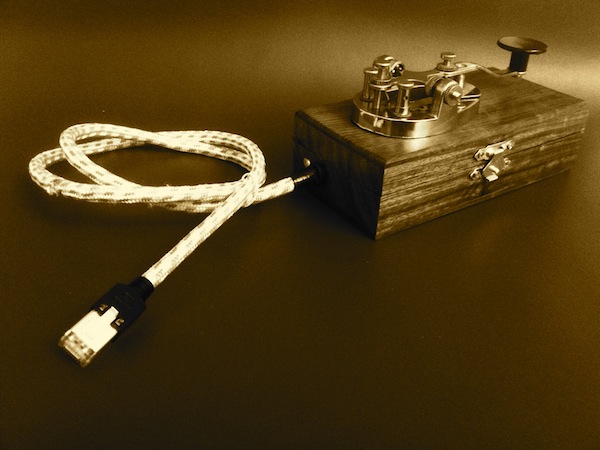The Morse Code might have lost its relevance in the real world, but geek-dome still continues to be fascinated by it. Morse Code aficionado, Martin Kaltenbrunner has designed a fascinating contraption, that may look archaic, but completely taps into to the current twitter trend
Meet the Tworse Key, which is just not a clever wordplay of twitter and Morse, but a fully functioning device or as the inventor puts it, “an open design exercise in interface archaeology.” This telegraph tweeting device lets one type their thoughts in Morse Code and, it’s hard not to be impressed by Kaltenbrunner’s attempt at interface archaeology.
The Tworse Key is Arduino-powered and in the era of steampunk, vintage revival and social-networking fits right in. The device can be hooked to the interwebs with a standard LAN cable, and the Morse signals are decoded via the on board Arduino Ethernet board. The final message is delivered through the Arduino circuit via the Twitter API and it gets posted in the Queen’s language. Granted, the Tworse Key makes the art of tweeting complicated, but there is something quite satisfying about hammering your thought away.
If the Tworse Key has caught your fancy and you dream of communicating with the world in Morse code, then you can make this device at home. The DIY project is fully documented, and you can access the source code, the hardware schematics and the building instructions here. You can also follow Martin Kaltenbrunner on twitter and read some example tweets sent from the actual device. His twitter handle is @tworsekey.
The Tworse Key is not the most practical of devices out there or even efficient. But, in this age of instant gratification, it weaves a surrealistic paradoxical alternative routine. A fortuitous assemblage of technology, design and even ingenuity, the Tworse Key will strike a chord with geeks all over, since it makes our cyber regime quite interesting.
Watch the video below to catch the Tworse Key in action and if you shall build yourself one, then read through the hardware requirements below:
Hardware requirements:
- Morse Key (search on Ebay)
- Arduino Ethernet board (or alternatively an Arduino plus Ethernet shield)
- piezo buzzer for auditory feedback
- 50 Ohm resistor to connect the buzzer
- RGB LED (common anode) for visual feedback
- 10k Ohm resistor to connect the LED (reducing its brightness)











